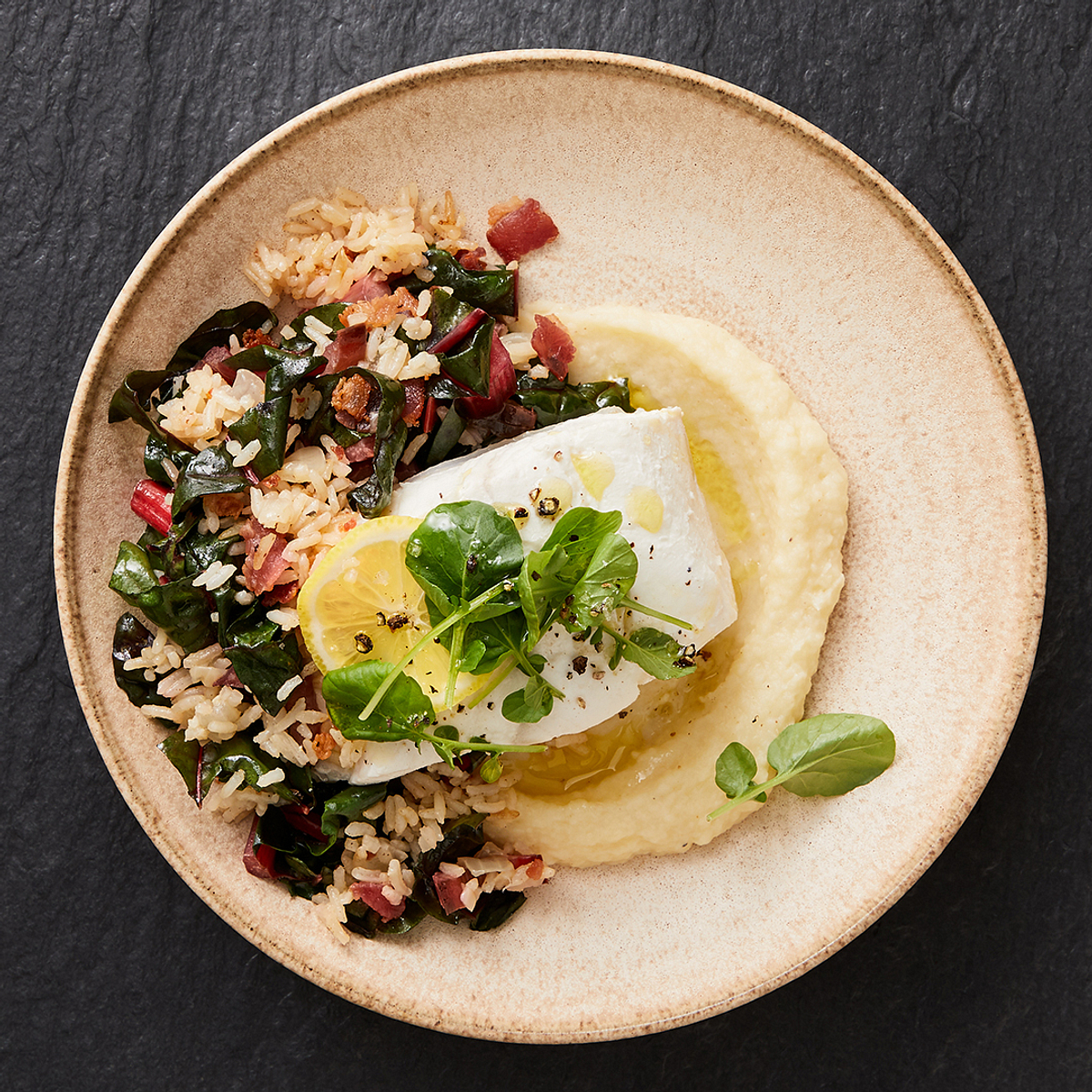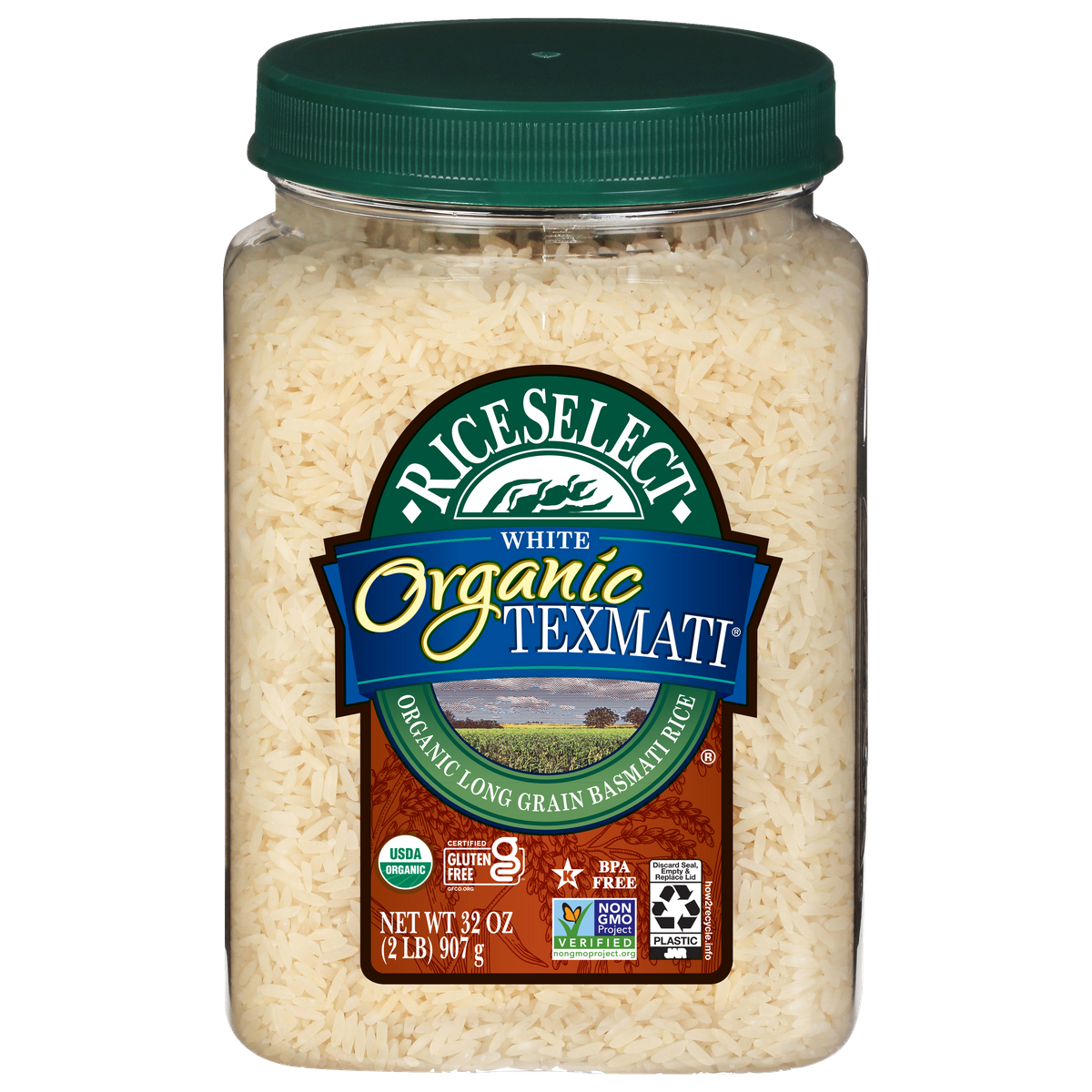Ingredients
- Poached Halibut
- Rice and Greens
- Celery Root Puree
Instructions
- Poached Halibut: In large saucepan, combine 4 cups water, wine, lemon slices, bay leaves, thyme, rosemary, shallot, garlic, peppercorns and salt; bring to simmer. Simmer for 10 minutes; reduce heat to low until barely simmering.
- Add halibut; poach for 8 to 10 minutes or until fish is just cooked through. Carefully transfer fish to paper towel-lined plate.
- Rice and Greens: Heat saucepan over medium heat; cook bacon for 3 to 5 minutes or until golden brown and crispy around edges. Stir in onion, garlic and red pepper flakes; cook for 2 to 3 minutes or until starting to soften. Stir in dandelion greens, Swiss chard and salt; cook for 3 to 5 minutes or until wilted and well coated.
- Stir in broth; bring to boil. Stir in rice and vinegar. Reduce heat to low. Cover and cook for about 15 minutes or until rice is tender and most of the liquid is absorbed. Remove from heat. Cover and let stand for 10 minutes. Fluff with fork.
- Celery Root Purée: Meanwhile, in large pot of boiling salted water, cook celeriac and potatoes for 15 to 20 minutes or until tender. Drain well; transfer to food processor. Add cream, butter, salt, pepper, nutmeg and cayenne; pulse until smooth.
- For each serving, smear celery root purée onto plate. Top with rice mixture and poached halibut. Garnish with watercress.
- Tip: Substitute pea sprouts or microgreens for watercress.
Have some extra wine that you don’t want to turn? White wine should be used in your soups, braises, and even desserts because it goes particularly well with seafood (and seafood pastas).
Guidelines for Using White Wine in Cooking
For cream sauces, separate the wine cooking and reduce the amount to half. Add the cream when it has cooled. Most recipes call for 1/2 cup to 3/4 cup of wine.
After sautéing the vegetables, add a few tablespoons of wine to the pan to deglaze it.
If you're steaming or poaching seafood, add wine to the broth (mussels, clams, oysters).
Wine can be added in little amounts to marinades to help the meat simmer more tenderly and caramelize.
The longer the wine is cooked, the less alcohol there will be in the meal. Boil the mixture for up to 2.5 hours to completely destroy the alcohol.
It is okay to consume white wine that has been kept open in the refrigerator for up to a week, and it is also safe to use in cooking for up to two weeks.
The Best Style of White Wine to Cook With
A dry, crisp white wine is by far the most flexible type of wine to use in cooking. While sweeter whites may caramelize during deglazing or offer undesirable sweetness to some foods, rich, oaky whites may become bitter while cooking.
A high-quality wine is only correctly used to finish a dish, where it will be the prominent component, because as wine cooks, it integrates into the entire food and the fine subtleties are nearly always lost. If not, go with a reasonably priced, drinkable white wine and invest your additional cash in premium ingredients.
These five white wines are all exceptional for cooking in their own unique ways.
Crisp White Wine (Such as Pinot Grigio, Sauvignon Blanc & Unoaked Chardonnay)
Dry Sherry
Dry Marsala
Sparkling Wine
Dry Madeira
Try our Creamy Risotto Recipe and see for yourself how delicious it is to cook with white wine.
Other Meal Inspiration
For something with more of a Mediterranean flavor, why not take a look at our tips for cooking Orzo and cooking couscous rice?


